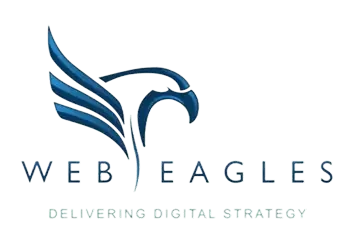E-A-T is a critical part of any SEO strategy, in that everyone writing copy for the Web or designing Websites needs to master it. It stands for Expertise, Authoritativeness, and Trustworthiness, and it is these three factors that Google has tuned its search algorithms to assess the quality of promoting the websites that do it better.
In 2022, Google added the second “E”, turning E-A-T into the less-catchy E-E-A-T. That second “E” represents “Experience” and was added because Google realised that the people that are typically best placed to comment on a topic are those that have experienced what the topic is about.
Understanding E-E-A-T
To succeed with E-E-A-T at the centre of your content strategy, you first need to understand what Google believes each of those letters means. Here’s a basic breakdown:
Experience: The first ‘E’ in E-E-A-T represents Experience. The newest addition to the content philosophy guidebook emphasises the importance of firsthand or life experience on the topic a page is about. Experience is crucial because it indicates that the content creator has direct knowledge or involvement with the subject matter. For instance, a product review is more credible if the author has personally used the product.
Expertise: Expertise refers to the content creator’s knowledge and skill in a particular area. It’s about demonstrating a deep understanding of the subject matter. Expertise is showcased through accurate and reliable information, which helps establish credibility with the audience. Content creators can display their expertise by presenting their qualifications, degrees, or any relevant credentials.
Authoritativeness: Authoritativeness is the ‘A’ in E-E-A-T, and it concerns the reputation of the content creator or the website. It’s about being recognized as a go-to source for information on a particular topic. Authoritativeness can be built through endorsements from other authoritative figures, citations from reputable sources, and a consistent history of producing high-quality content that is recognised and respected within the industry.
Trustworthiness: The final ‘T’ stands for Trustworthiness. Trust is the cornerstone of E-E-A-T, as it underpins the other elements. A page must be considered trustworthy to have high E-E-A-T. Trustworthiness is assessed by the accuracy of the information provided, transparency about the authorship, and the integrity of the content. It also involves the security of the website, ensuring that users feel safe when visiting and interacting with the site.
Assessing Your E-E-A-T
One you know what E-E-A-T is, the next task is to understand how to assess it.
There’s a lot of work that can go into fully analysing E-E-A-T. Companies can start by using Google Analytics to track user engagement metrics, which are indicative of the site’s experience and trustworthiness. Metrics such as bounce rate, average session duration, and pages per session can provide insights into how users interact with the site.
For expertise and authoritativeness, companies can utilise tools like Moz’s Domain Authority or Ahrefs’ Site Audit feature to gauge the site’s strength and credibility in the eyes of search engines. These tools analyse backlink profiles, content quality, and SEO performance to generate scores that reflect the site’s perceived expertise and authority.
Additionally, companies can employ user experience tools like Hotjar, which offers heatmaps and session recordings to understand how users navigate and interact with the site. This data can help identify areas where the site excels or falls short in providing a trustworthy and authoritative user experience.
You can spend a lot of time carefully analysing your website this way. While it’s important to do so, in most cases you’ll be better off working with experts in the area who can not only provide that critical analysis, but also guidance on how to improve your scores and rapidly scale interest to your website in kind.
Improving Your E-E-A-T
To improve your E-E-A-T, you need a quality content strategy that takes into account all four pillars. In other words, you should build a strategy around:
Experience: To demonstrate experience, share personal stories or case studies that showcase your direct involvement with the topic. Highlighting real-life applications of your knowledge can make your content more relatable and engaging. For instance, if you’re writing about cooking, share your unique recipes or cooking techniques that you’ve developed over time.
Expertise: Establishing expertise requires showcasing your depth of knowledge in a particular field. This can be done by providing well-researched and accurate content. Including author bios with relevant qualifications, awards, or certifications can also lend credibility to your expertise. It’s important to remember that the level of expertise expected can vary depending on the subject matter.
Authoritativeness:Building authority involves proving that you are a reliable source of information. This can be achieved by earning links from reputable websites, listing your professional credentials, and having recognised experts in your field endorse your content. Engaging with your audience through comments and social media can also help establish your authority.
Trustworthiness: To cultivate trust, be transparent about any affiliations or biases in your content. Clearly disclose sponsored content or affiliate links. Providing accurate contact information and having an informative ‘About’ page can also help build trust with your audience. Ensuring that your website is secure (using HTTPS) is another key factor in establishing trustworthiness.
Overall, succeeding with E-E-A-T comes down to an ongoing commitment to both content and its promotion. It’s not something that you can turn on and off like a switch, but with that dedication, the long-term dividends will be significant.


